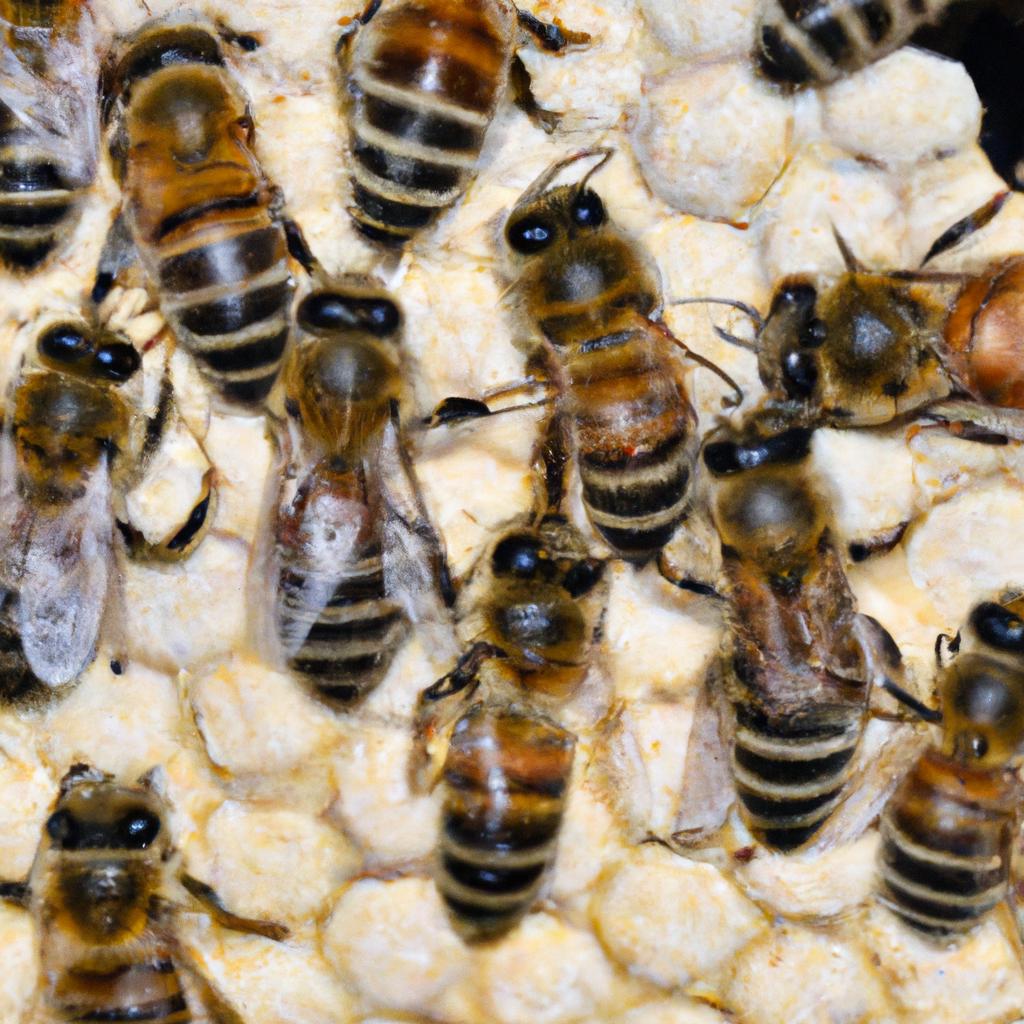Introduction

Bees play a vital role in our ecosystem, and their contribution to our food supply cannot be overstated. One of the most valuable products that bees produce is honey, which has been prized for centuries for its sweet taste and numerous health benefits. However, have you ever wondered how much honey a single bee can produce in its lifetime? In this article, we’ll explore the fascinating world of honey production in bees and answer the question, “how much honey does one bee make in its life?”
The Role of Bees in Honey Production

Honey production is a complex process that involves the cooperation of thousands of bees working together in a hive. Bees collect nectar from flowers and store it in their honey stomachs, where enzymes break down the sugars and convert them into honey. Once the bees return to the hive, they regurgitate the nectar into other bees’ mouths, and the process of adding enzymes and reducing moisture continues. Finally, the honey is stored in honeycomb cells, where it is capped with beeswax until it is ready to be eaten.
Bees play a crucial role in the honey production process, and without them, we would not have the delicious and nutritious honey that we enjoy today. In fact, bees are responsible for pollinating over 30% of the world’s crops, which means that their contribution to our food supply is invaluable.
How Much Honey Does One Bee Make?
When it comes to honey production, the amount of honey a single bee produces in its lifetime can vary depending on several factors. These factors include the species of bee, the environment they live in, and the availability of nectar and pollen. On average, a single honeybee can produce anywhere from 1/12 to 1/20 of a teaspoon of honey in its lifetime. This may not sound like much, but when you consider that a hive can contain thousands of bees, the amount of honey produced can quickly add up.
The average lifespan of a worker bee, which is responsible for honey production, is around six weeks. During this time, the bee will spend its days foraging for nectar and pollen, caring for the young in the hive, and producing honey. It’s worth noting that not all worker bees are responsible for producing honey, and some may have other roles in the hive.
There can also be variations in honey production among different species of bees. For example, the Africanized honeybee, also known as the “killer bee,” is known to produce less honey than other species of bees. However, they are more aggressive and better at defending their hive from predators.
Life Cycle of a Worker Bee
To understand how honey production fits into a bee’s life, it’s essential to know the different stages in a worker bee’s life cycle. A worker bee’s life begins as an egg, which hatches into a larva after three days. The larva is then fed a mixture of royal jelly and pollen for several days before spinning a cocoon and transforming into a pupa.
After 21 days, the pupa emerges as a fully grown worker bee and begins its life in the hive. During the first few days, the bee’s primary role is to clean the hive and care for the young. As the bee gets older, it will graduate to more complex tasks such as foraging for nectar and pollen, building honeycomb, and producing honey.
Honey production is a crucial part of a worker bee’s life, as it provides nourishment for the hive during times when food is scarce. Bees will produce more honey than they need to survive, allowing beekeepers to harvest the excess and enjoy the sweet, golden liquid that we all know and love.
Importance of Honey to Bees
Honey is not only valuable to humans, but it is also essential for the survival of bees. Bees use honey as their primary source of food, and it provides them with the energy they need to carry out their daily activities, including foraging for nectar and pollen, building and maintaining the hive, and caring for the young. Honey also contains essential vitamins and minerals that are necessary for the bees’ health and well-being.
Additionally, bees store honey for the winter months when food sources are scarce, and the hive cannot produce new honey. During this time, the bees rely on their honey stores to survive until the spring when new flowers begin to bloom and nectar becomes available again. Honey is critical to the bees’ survival, and without it, the entire hive would be at risk.
Conclusion
In conclusion, bees play a crucial role in our ecosystem, and honey production is just one of the many ways in which they contribute to our livelihood. Bees are responsible for pollinating our crops, which is vital to our food supply, and without them, our diets would be much less diverse and nutritious. Honey is not only delicious, but it is also essential to the bees’ survival, and we must do our part to protect these incredible creatures and their habitats.
At BeeKeepinglove.com, we are committed to promoting sustainable and ethical beekeeping practices that prioritize the bees’ health and well-being. By supporting responsible beekeeping and consuming honey from reputable sources, we can all contribute to the preservation of these amazing insects and the invaluable services they provide.
